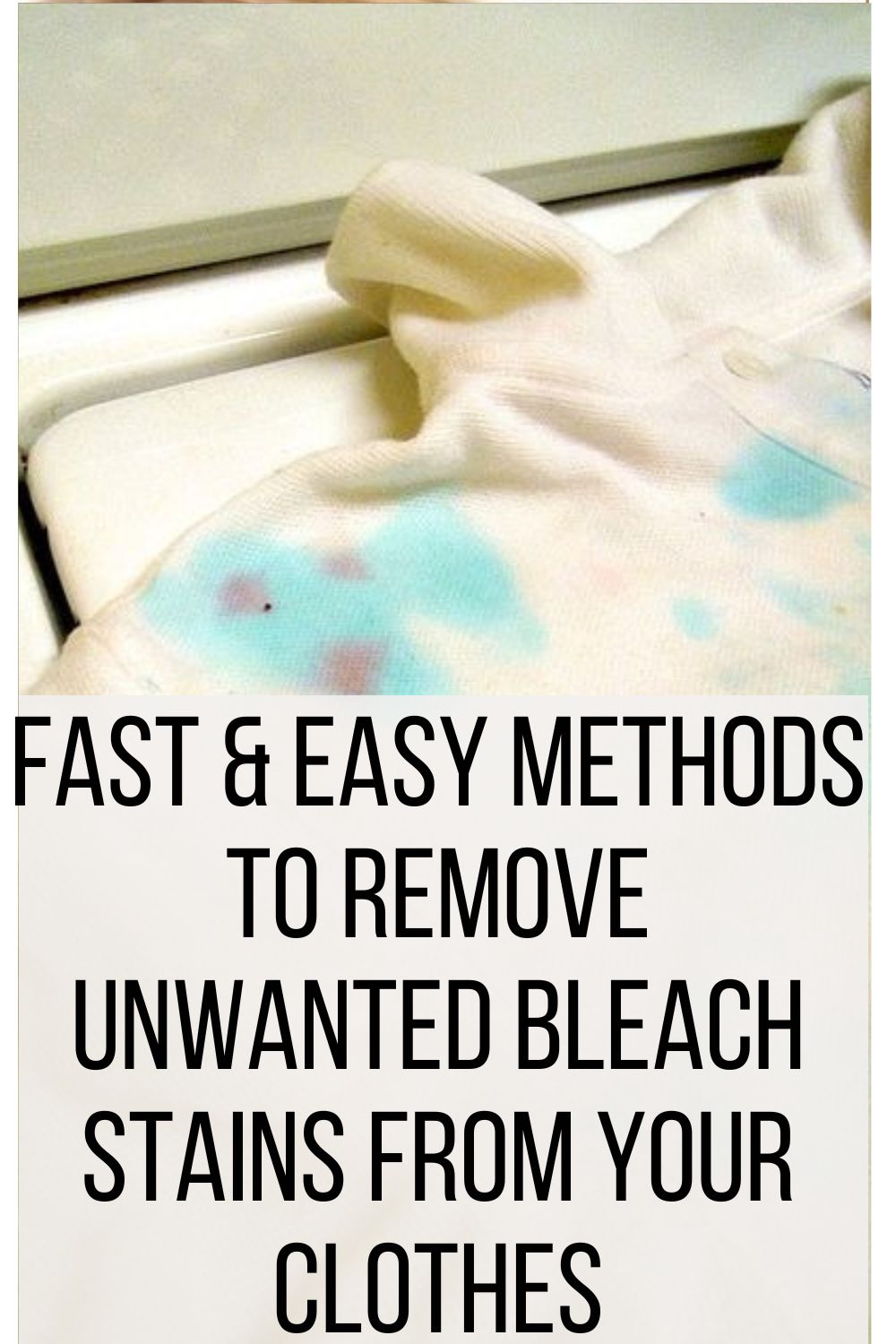
Have you ever wanted to remove unsightly bleach stains from your clothing? It can be a seriously daunting task to take on, but it doesn’t have to be. There are several simple and effective methods to remove unwanted bleach stains from clothing that don’t require a lot of time or effort. From using baking soda and vinegar to using laundry detergent and bleach, these 7 fast and easy methods can help you reverse the damage from the bleach and restore your clothing to its former glory. So, if you’re looking for an easy and effective way to tackle those bleach stains, look no further.
Table of Contents
Can Bleaches Leave Permanent Stains or Discolorations On Your Clothes?
Bleach is a great product for cleaning stains, but the effects of usage in an excessively high concentration or an accidental spill can be permanent. Because bleach removes dye and other materials from surfaces and fabrics, fixing a bleach stain is tricky and requires trying to counteract the dye loss or discoloration as opposed to actually removing or cleaning the bleach.
Chlorine bleach is particularly known to cause yellowing or discoloration of fabrics, and can even weaken the fabric’s fibers over time. Oxidizing bleaches, such as hydrogen peroxide, can also cause damage to fabrics if used incorrectly.
However, it is important to note that other factors such as the type of fabric and the duration of exposure to the bleach will also affect the outcome. Some clothes are more resistant to bleach than others, and it is always important to read and follow the care instructions for each garment.
Can Stains or Discolorations From Bleaches Be Corrected?
It is possible to correct discolorations caused by bleach on some types of fabrics, however, the success of the correction depends on the severity of the discoloration, the type of fabric, and the care that has been taken after the discoloration occurred.
- Some discolorations caused by chlorine bleach can be corrected by using a color restorer, which is a product specifically designed to neutralize the yellowing or discoloration caused by bleach.
- Applying a color remover or bleach can also be used, but it should be done very cautiously and carefully as it can cause additional discoloration or damage to the fabric.
- Dyeing the fabric may be an option to correct discolorations if the discoloration is severe and cannot be removed.
It is important to note that, discolorations caused by bleach can weaken the fabric, thus making it more delicate, so any correction method should be done with care and with recommended instructions, also it’s worth testing the method on a small inconspicuous area before doing it on the entire garment.
It’s also a good idea to consult with a professional cleaner as they may have more specific treatments that could work with the fabric and discoloration.
Best Ways To Correct Discolorations Caused By Bleaches – 7 Easy And Efficient Methods
There are several quick fixes for bleach discolorations on clothing that you probably already have in your home. Here are 7 of the easiest and most effective ways to fix the stains caused by bleaches on your fabrics:
Baking Soda To Correct Discolorations Caused By Bleaches
Although bleach stains won’t be removed, baking soda will stop them from getting worse. You can reapply the dye to the bleached area after inactivating the bleach using baking soda. This technique is crucial because you don’t want to accidentally combine bleach with another product while you are trying to restore the discolored area.
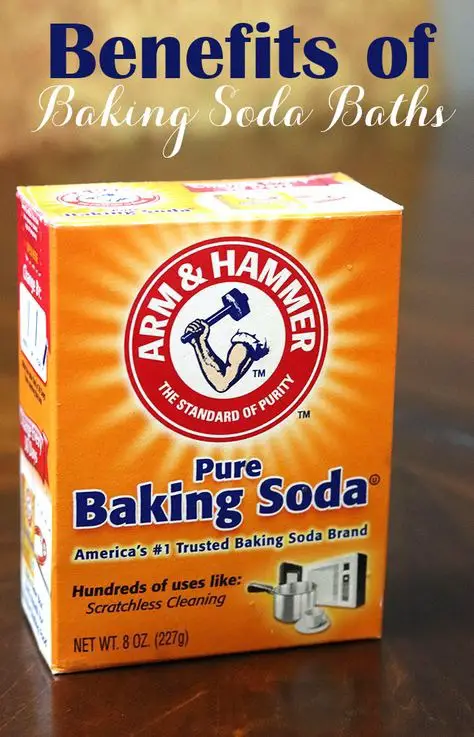
The bleach is neutralized in various ways by baking soda and some other products like sodium thiosulfate and hydrogen peroxide. A product like sodium thiosulfate, on the other hand, is more expensive and harder to come by. Let’s examine how to use baking soda to treat a bleach stain since it is the least expensive and widely available of these items.
- Mix a paste of baking soda and water. The consistency should be thick enough to stick to the fabric.
- Apply the paste to the discolored area and let it sit for 15-20 minutes.
- Rinse the paste off with cold water.
- Repeat the process if necessary, but this time use a solution of baking soda and white vinegar instead of just water.
- Launder the garment as you normally would.
It is important to note that while baking soda plays an important role in restoring the color of clothes that have been discolored by bleach, it does not actually remove the stain. It only prevents the stain from growing bigger and also makes it easier to restore the discolored parts. In some cases, the discoloration may be too severe to be completely reversed.
Rubbing Alcohol To Correct Discolorations Caused By Bleaches
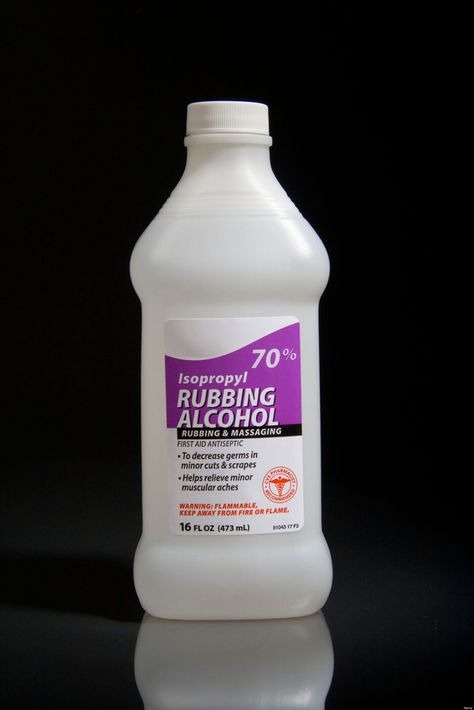
This method can be applied in two ways. First, rubbing alcohol can be used to leach color from the unbleached part of the cloth to the discolored part of the cloth. However, this technique is only advisable when the discoloration is not much and you are dealing with clothes that were originally pigmented using a water-soluble dye. Here are the steps to follow when using this technique:
- To ensure that the bleach is no longer active, use a neutralizer, such as baking soda.
- Apply the alcohol to the stained area using a cotton swab or clean cloth, circling from the unbleached area into the discolored part, as you go. This ought to gradually restore color to the bleached area.
- Continue step 2 until the color has been fairly restored to the discolored part to your satisfaction.
- Rinse the area with cold water when the discolored spot has completely colored.
- Get rid of any strange odors by washing the clothing as you normally would.
Alternatively, you can use rubbing alcohol as a dye fixative when trying to rectify discoloration from bleaches. Here are the steps to follow:
- First, mix a small amount of alcohol (such as isopropyl alcohol or rubbing alcohol) with a few drops of food coloring or fabric dye.
- Next, use a dropper or brush to apply the mixture to the bleached area of the cloth.
- Let the cloth dry completely, then check the color and repeat the process if necessary.
It’s important to test a small, inconspicuous area of the cloth first before applying the mixture to the entire bleached area, as the color may not turn out as expected.
Fabric Marker To Correct Discolorations Caused By Bleaches
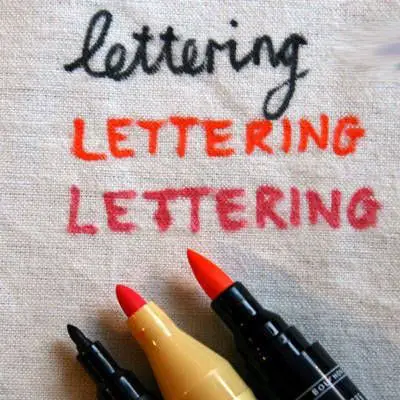
Bleach stains can be colored in with a fabric marker pen, exactly like on a coloring book page! However, you will need to track down a marker that is an exact match to the color of your clothing. That’s why black clothing might be the best clothes to try this technique with. To restore color to a bleached fabric using fabric markers, you can follow these steps:
- First, make sure to neutralize the bleach with the baking soda approach before taking any further action.
- Clean the bleached area of the fabric with water and mild detergent to remove any residue.
- Allow the fabric to dry completely.
- Choose the fabric marker color that you want to use for restoring the color.
- Test the fabric marker on a small, inconspicuous area of the fabric to ensure that the color is what you want and that the fabric will accept the ink.
- Once you are satisfied with the color, carefully color in the bleached area of the fabric using the fabric marker. You can use a light touch and go over the area multiple times to build up the color.
- Allow the fabric to dry completely. For most fabric markers, heat-setting in a dryer is necessary to ensure that the color stays permanent.
- Check the color and repeat the process if needed.
It’s important to note that fabric markers are not suitable for all types of fabrics. Some fabric markers, for instance, only adhere to natural fabrics like cotton and do not adhere to synthetic materials like polyester. So be sure to check the label on your fabric and the fabric marker package to make sure they are compatible.
Fabric Dye To Correct Discolorations Caused By Bleaches
You might want to consider a stronger and more technical option like fabric dye if your bleach stain is particularly large. There are various techniques to apply dye to restore color to bleached regions. For instance, you may attempt tie-dying to restore a light-colored skirt that has been ruined by bleach in a colorful new way.
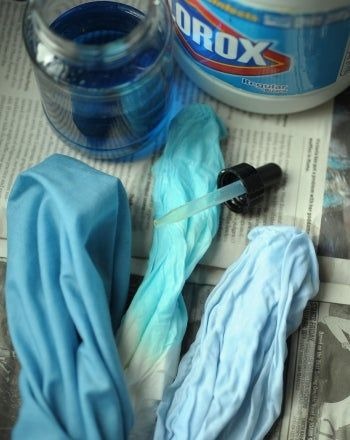
The right fabric dye must be chosen if all you want to do is restore your cloth to its original color. In addition, you must decide whether to use a disperse dye for synthetic fabrics or a water-soluble dye for the majority of natural materials. Before you start, make sure to read the instructions on the packet because certain colors call for specific procedures like heating water. To use fabric dye to restore color to a bleached fabric, follow these steps:
- Gather your materials. These include a fabric dye, a plastic container or bucket for mixing the dye, a spoon or stir stick for mixing the dye, rubber gloves to protect your hands from the dye, a dropper or brush (if the dye is in liquid form), etc.
- Clean the bleached area of the fabric with water and mild detergent to remove any residue. If possible, wash the garment before dyeing.
- Mix the fabric dye according to the package instructions. Most dyes require you to mix the powder or liquid dye with water in a plastic container or bucket. Some dyes also require the addition of salt to the mixture
- Apply the dye. If the dye is in liquid form, use a dropper or brush to apply the dye to the bleached area of the fabric. If the dye is in powder form, use your hands to apply the dye to the bleached area.
- Once the dye is applied, it’s essential to allow it to set. The setting time will vary depending on the type of dye and the fabric.
- Once the dye has set, rinse the fabric thoroughly to remove any excess dye. Rinse the fabric until the water runs clear.
Remember to always test a small, inconspicuous area of the fabric first before applying the dye to the entire bleached area to ensure that the color will turn out as desired. And also, always read the care label on the clothes and the fabric dye package to make sure they are compatible.
Dishwashing Liquid To Correct Discolorations Caused By Bleaches
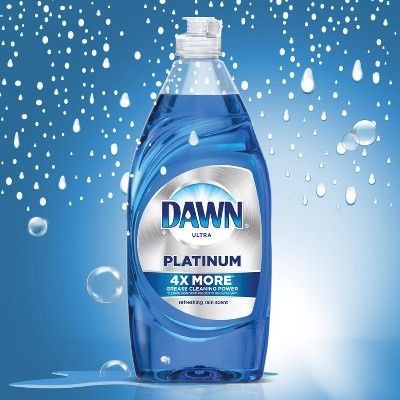
Try the dishwashing liquid approach to quickly remove any accidental bleach spill if you’re washing laundry and the bleach gets a bit out of control or if you’re dying your hair and some bleach spills into your shirt.
Now, bleach stains on clothing are typically impossible to remove. However, you can easily remove the bleach from the affected area by using diluted dishwashing soap almost immediately, especially if the stain is minor. Along with garments, this method also works on carpets and upholstery. Here are the steps you can follow when trying this method:
- Fill the sink or basin with warm water.
- Add a small amount of dishwashing liquid to the water and mix it in until it is fully dissolved.
- Place the bleached clothing into the water and gently agitate it to ensure that the entire garment is fully saturated.
- Allow the clothing to soak for at least 30 minutes, or up to an hour if the bleaching is severe.
- Use the clean towel or rag to gently scrub the affected areas of the garment. This will help to lift any remaining bleach stains.
- Rinse the clothing thoroughly with warm water to remove any remaining dishwashing liquid.
- Launder the clothing as you normally would, using a mild detergent and cold water.
White Vinegar To Correct Discolorations Caused By Bleaches
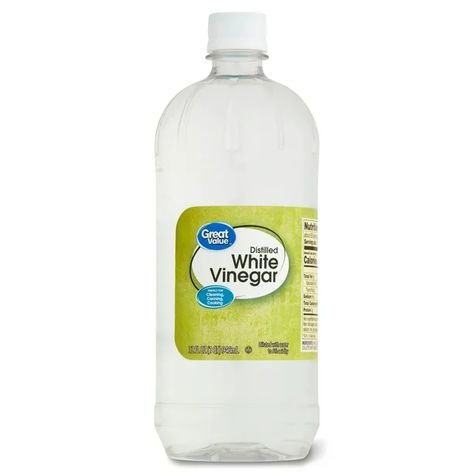
Distilled white vinegar is one of the best solutions for removing bleach stains from fabrics, especially for restoring white clothing that has been turned yellow by bleach. Here are the steps to follow when using this method:
- Mix one part white vinegar with four parts water in a bucket or sink.
- Soak the bleached clothing in the mixture for about 30 minutes.
- Rinse the clothing thoroughly with cold water.
- Wash the clothing as usual with detergent, using the hottest water recommended on the care label.
- Check the clothing for any remaining discoloration before drying. If the discoloration remains, repeat the process.
- Dry the clothing as usual.
Please note that this method may not work for all types of fabric, and it may not completely remove the discoloration. But it can help to reasonably restore the color of accidentally bleached clothes.
Salt Solution To Correct Discolorations Caused By Bleaches
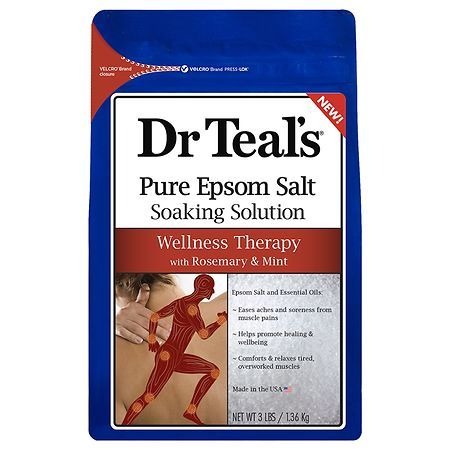
Different stains can be effectively removed by combining salt and water. The salt crystals can remove extra bleach from clothing. Additionally, they can correct discolorations caused by bleach. Aside from clothes, drapes, rugs, and shoes can all be treated with this solution. Here is how to go about it:
- Mix a solution of 1 cup of salt to 1 gallon of warm water in the basin or sink.
- Soak the bleached clothing in the salt solution for at least 30 minutes, or up to several hours for heavily bleached garments.
- Remove the clothing from the solution and rinse it thoroughly with cool water.
- Wash the clothing as usual, using the appropriate detergent and cycle for the fabric.
It is important to know that this method may not completely restore the original color of the garment, but it can help to reduce the appearance of bleaching.
Conclusion
In conclusion, bleach stains can be a frustrating and unsightly problem for clothing. However, with the right techniques and materials, it is possible to remove or reduce the appearance of these stains. It’s always best to test a small, inconspicuous area of the garment first and to follow the care instructions on the label so as not to cause further damage. With a little patience and persistence, it is possible to restore your clothes to their former glory.